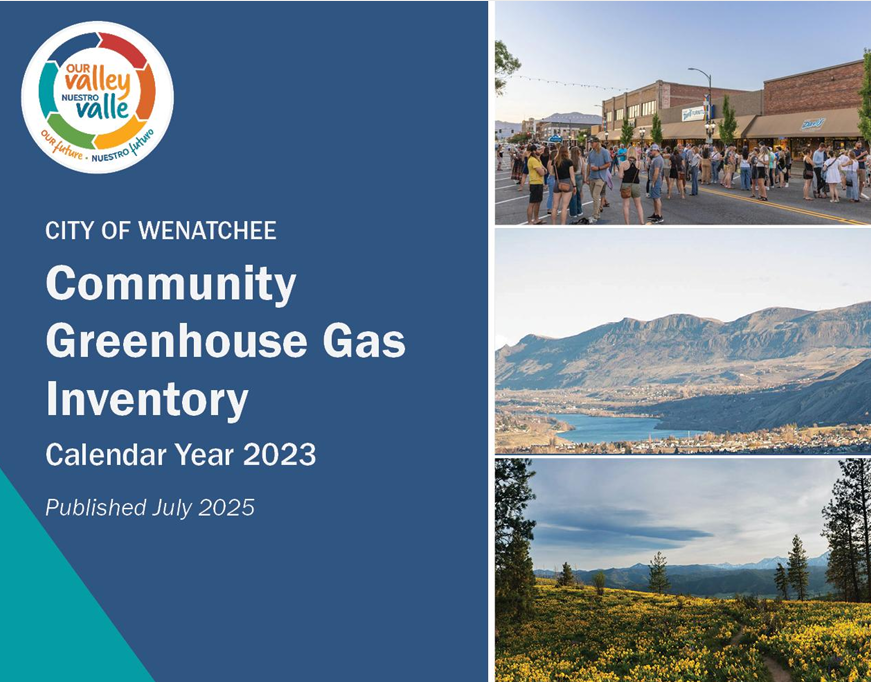Facing Climate Risks Together: Insights from Our Region’s New Assessment
- marlene0303
- Jul 25
- 3 min read
by Marlene Farrell
What do we worry about in North Central Washington when the weather is bad for days or weeks (By “bad” we’re not talking about inconvenient. We’re talking about extreme and harsh)?
Well, there are a lot of things. Take your pick:
Too much or too little rain can ruin the harvest of our region’s famous fruits and diminish wages for farm workers
Drought decreases river flow which stresses salmon and other fish
An older neighbor will suffer if their air conditioning can’t keep up with the heat wave
Kids’ soccer practice is canceled due to temperatures in the 100s.
A "snowmageddon" can shut down services and trap people in their homes, possibly with power outages
Ice storms can cause trees to fall on houses and car accidents
Wildfire smoke… This list could get really long if we start thinking about all the ways that wildfires and smoke affect physical, mental, and economic health!

Climate change is a global phenomenon, so it can feel too big to tackle. But the local threats, our very real worries, and the very real suffering of our neighbors are critical to understand.
Stories are one way of communicating the local impacts. Even better is when data and analysis underpin the stories we tell. Analysis can show us which stories need attention. Like answering the question, “Who is experiencing the greatest harm from a climate change threat?” Or, “Who is innovating to mitigate harm or to build adaptive resilience?”
This is what we were thinking when we realized our region could use this sort of information for public awareness and informed decision making. Over the past year and a half, Sustainable NCW, Our Valley Our Future and Elizabeth Walker Consulting have worked with Cascadia Consulting, with funding from the Washington Department of Health, to conduct a Climate Vulnerability Assessment (CVA) for Chelan and Douglas Counties. This completed CVA examines the impacts of climate change related to hazards such as heat, wildfire and smoke on human health, categorized by public health and safety, physical health, economic health, and mental health and wellbeing.
The CVA is not a duplication of other efforts like Chelan County’s Community Wildfire Protection Plan and Hazard Mitigation Plan, but rather, is informed by those reports while it maintains a focus on health effects.
We strongly encourage residents, and, importantly, local decision makers to read both the Executive Summary and the full CVA report. As one example, we all know that our region has areas with some of the highest wildfire risk in the nation because we have a lot of properties in what is known as the Wildland Urban Interface. The CVA adds context by looking at the myriad of impacts of wildfire and smoke, such as:
Economic impacts on agriculture, tourism and workers
Impacts on emergency services related to coordination challenges and evacuation routes
Lower air quality affecting certain vulnerable populations more, with increased emergency room visits
Increased insurance costs are a hardship for some residents
Mental health effects associated with climate hazards
Beyond flagging the risks and impacts, the CVA also highlights adaptive capacity actions and opportunities to do more. For wildfire and smoke, the path forward might include more assistance for people to filter and cool their indoor air, outreach and support for home hardening, and economic resiliency planning to help small businesses survive bad fire and smoke seasons.
Readers of the CVA will come away with a better understanding of how climate change is directly impacting North Central Washington, and what needs to happen next to help our community anticipate risks, mitigate the worst impacts, protect the most vulnerable, and respond quickly and effectively.




Comments